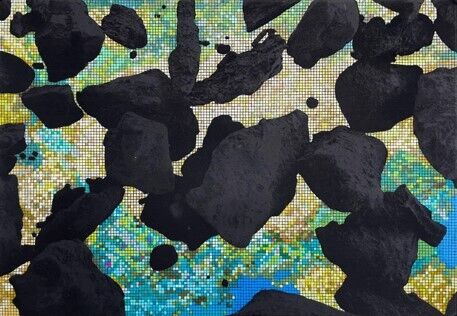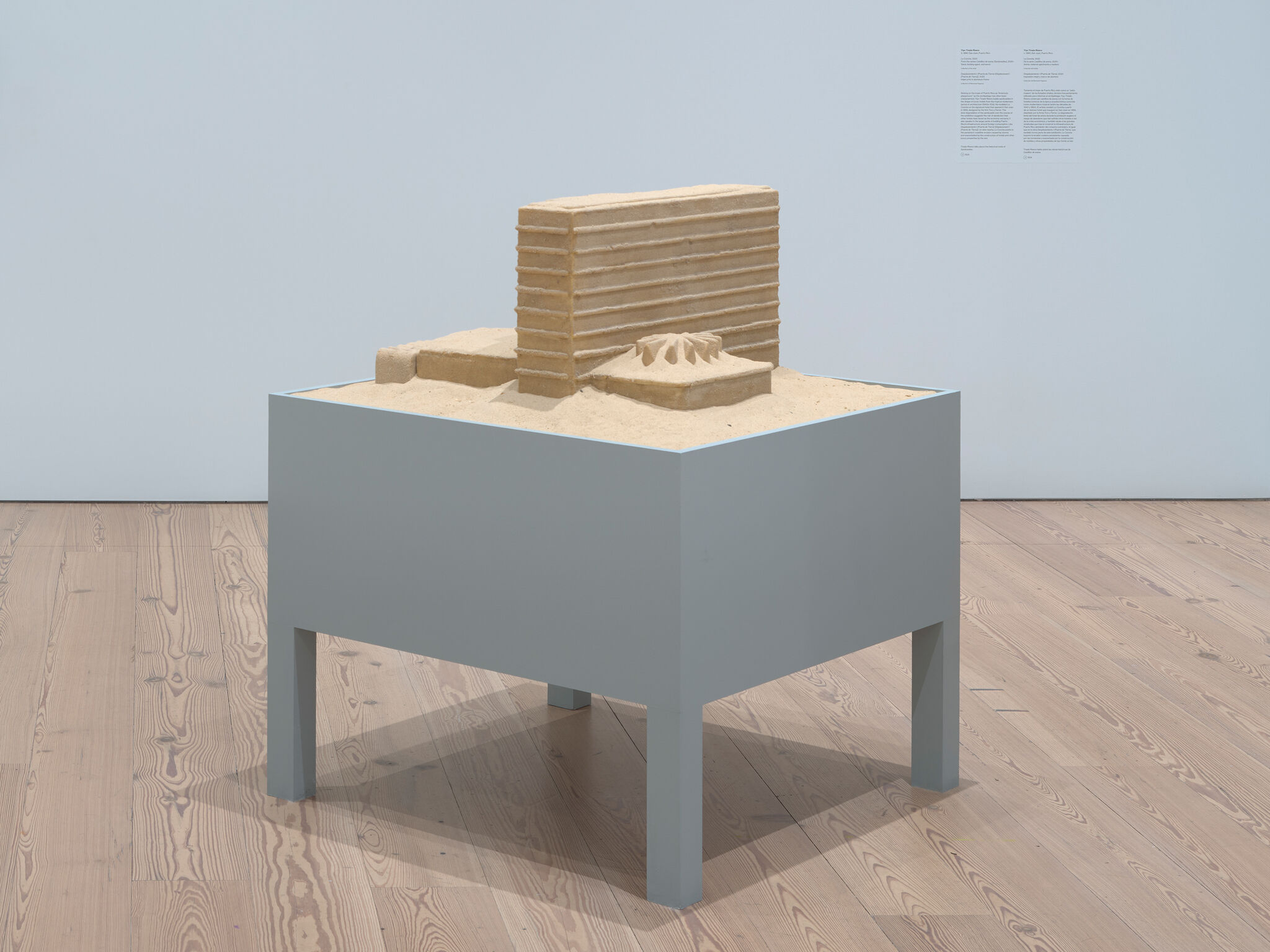Ecology and Landscape
How would you rethink the landscape?
Hurricane Maria dramatically impacted Puerto Rico's landscape and altered its ecosystems. The damage from the storm was profound; it demolished homes and stripped the land of its vegetation. The destruction was not only natural, but also man-made—years of government neglect, ill-planned infrastructure, and a debt crisis compounded the storm’s ecological effects, severely hindering Puerto Rico’s response to the hurricane. Through their work, Puerto Rican artists present critical and multifaceted perspectives on their changing environment, stressing the global inequities of climate change and the need for climate justice.
Activity
Present Episode 2: Memory to students. Have them reflect on what the artists say about the lasting emotional and societal impacts of Hurricane Maria and share what resonated with them. Ask students to discuss how personal memories and broader social stories, both positive and negative, are remembered. Perhaps their families cherish photos, keepsakes, or oral histories, and their countries may create holidays, monuments, or currencies to commemorate events and people. Ask students to design a ceremony or other way of honoring what their families, ethnicities, or nations have accomplished or endured. Invite them to present their commemorative objects or actions.
Frances Gallardo
Pronouns: she/her
“For me, not only do these images speak about the invisible in the landscape, but the invisible emotions of life in the changing climate.” —Frances Gallardo
Born in 1984 in San Juan, Puerto Rico, Frances Gallardo holds an MFA from Cornell University in Ithaca, New York, and a BA from the University of Puerto Rico. Her work explores the meteorology of the Caribbean through techniques like drawing, paper cutting, and collage.
Aerosols examines the phenomenon of Saharan dust, a mixture of sand and dust that travels from the Sahara Desert to other parts of the world, including the Caribbean. The dust clouds darken skies and trigger respiratory problems. For this project, Gallardo brought dust samples from Puerto Rico to the Textiles Nanotechnology Laboratory at Cornell and had them observed with highly specialized microscopes. She then created heat etchings of the images, and arranged them on hand-colored backgrounds, evoking weather patterns. Gallardo is fascinated by our planetary interconnectedness, and the way hurricanes “take heat and water from different political boundaries—the same way the Sahara dust also does not care about political boundaries.”
Activities
How could you reveal unseen worlds?
Frances Gallardo collaborated with scientists and used technology to make her art. The FESEM microscope, which Cornell experts employed to view her dust particles, allows for magnifications of 10x to 300,000x. Have students choose unnoticed or unseen aspects of nature they would like to bring attention to through their personal observations. Invite them to research scientific images of life or the environment at the microscopic level in print or online. If possible, encourage students to conduct their own investigations using magnifying glasses or microscopes. Have them creatively document and share their findings.
How would you narrate stories from nature?
By using microscopic imagery of Saharan dust, Frances Gallardo exposes a phenomenon that impacts the daily lives of Puerto Ricans. In doing so, she presents a new point of view on a narrative familiar to many. Invite students to tell each other about different environmental impacts on their local surroundings. Encourage each student to outline a plot for a story about their circumstances. Then, ask them to switch their perspectives and write their narrations from the point of view of a natural element. Have students read their stories aloud and share the challenges and surprises they faced when changing perspectives.
How could you activate the environment through art?
Gallardo highlights the climatic event of Saharan dust, and in turn its ramifications, through unexpected creative means. Ask students to think about how they could be inspired by natural and elemental phenomena and materials to create art. Have students discuss what they would like to convey about the environment through their artistic choices and acquired scientific knowledge. Encourage them to take nature walks to consider their potential sites and experiment with resources. Invite them to devise proposals to create artworks, actions, or performances. Then have them carry them out in the landscape or the classroom and document their work.
How would you exhibit climate change?
By magnifying the dust and sand particles in the air that Puerto Ricans breathe, Gallardo draws attention to climate change and its consequences on humans. Equally, human activity has dramatically impacted the planet on many levels. Have students research and discuss the means by which diverse governments, organizations, and populations negatively affect their environments, oftentimes with inequitable impacts. Ask students to develop a climate justice campaign addressing an aspect of their investigations and potential resolutions. Encourage students to collaboratively design an in-person or online exhibition, considering how they would organize and display their works to best convey their ideas (thematically, geographically, solution-focused, etc.)
Yiyo Tirado Rivera
Pronouns: he/him
“I don't really think that any country should base their economy on tourism because tourism is an opinion of a person coming from another place.”
— Yiyo Tirado Rivera
Born in 1990, Yiyo Tirado Rivera lives and works in San Juan and is the co-founder and co-director of the contemporary art space KM 0.2, in Santurce, a neighborhood in San Juan. His series Sandcastles is based on hotels constructed between the 1950s and the 1970s. The artist explains, “The purpose of these hotels was to present Puerto Rico as a touristic venue for the Caribbean.” He modeled the sand sculpture La Concha on the signature hotel that opened in San Juan in 1958, named after its ballroom shaped like a shell. Tirado Rivera’s recreation will degrade over the course of the exhibition. “The time it takes the sculpture to fall apart is variable with the climate around the piece,” he says. The work presents a deceptively playful critique of the impact of the tourism industry and underscores the ramifications of climate change and a worsening economy in Puerto Rico.
Activities
How would you capture change?
The sculpture La Concha will slowly fall apart throughout the exhibition as the sand unbinds, echoing transformations both natural and man-made that the artist has observed on the Puerto Rican coastline. Ask students to consider visible indicators of change—in the natural world, in the industrial realm, or in people. Then challenge them to create a drawing or photography series that captures their observations of a changing subject over a period of time. Have students devise a way to share their works and their reflections on time, whether through digital or physical display or even time-lapse video or animation.
How could you create a visual metaphor?
Yiyo Tirado Rivera explains there is a “metaphoric” aspect to his sand sculpture La Concha. “When the winter comes, the sea rises its levels, the waves hit the ballroom,” the artist says of the hotel on which the work is based. The sculpture’s precariousness mirrors the hotel’s existing conditions. Have students discuss the work as a metaphor, and brainstorm other metaphors they may know from literature or daily life. Invite students to select a metaphor, create a visual representation, and share them. Encourage them to analyze the possible meanings of each other's works and describe their decision-making processes.
How would you make an ephemeral work of art?
The slow deterioration of Tirado Rivera’s sandcastle throughout the exhibition brings to mind the transient nature of Puerto Rico’s landscape and the passage of time. Introduce students to the concept of installation art, in which a work is designed for a specific place or a temporary period of time. Ask students to think of materials they could select to make artworks that will not last. They could choose to use impermanent natural or man-made materials. Encourage them to reflect on how the environments where they display their works could accelerate their breakdown. Ask them to document the transformation of their works.
How could you advocate for environmental protection?
Yiyo Tirado Rivera’s sandcastles exemplify the increasing vulnerability of Puerto Rico’s shoreline to the effects of climate change, like coastal erosion and hurricanes. Have students think about the environmental issues that have a direct impact on them locally. Encourage students to discuss different ways they could make those who are not from their communities understand the urgency of these matters. Invite them to decide if they will make artworks or seek other means of expressing their concerns. Motivate them to reach out to the broadest variety of audiences or publics possible.
Additional Resources
New York Times: Article covering the aftermath of the Hurricane
Artist Website: Frances Gallardo


